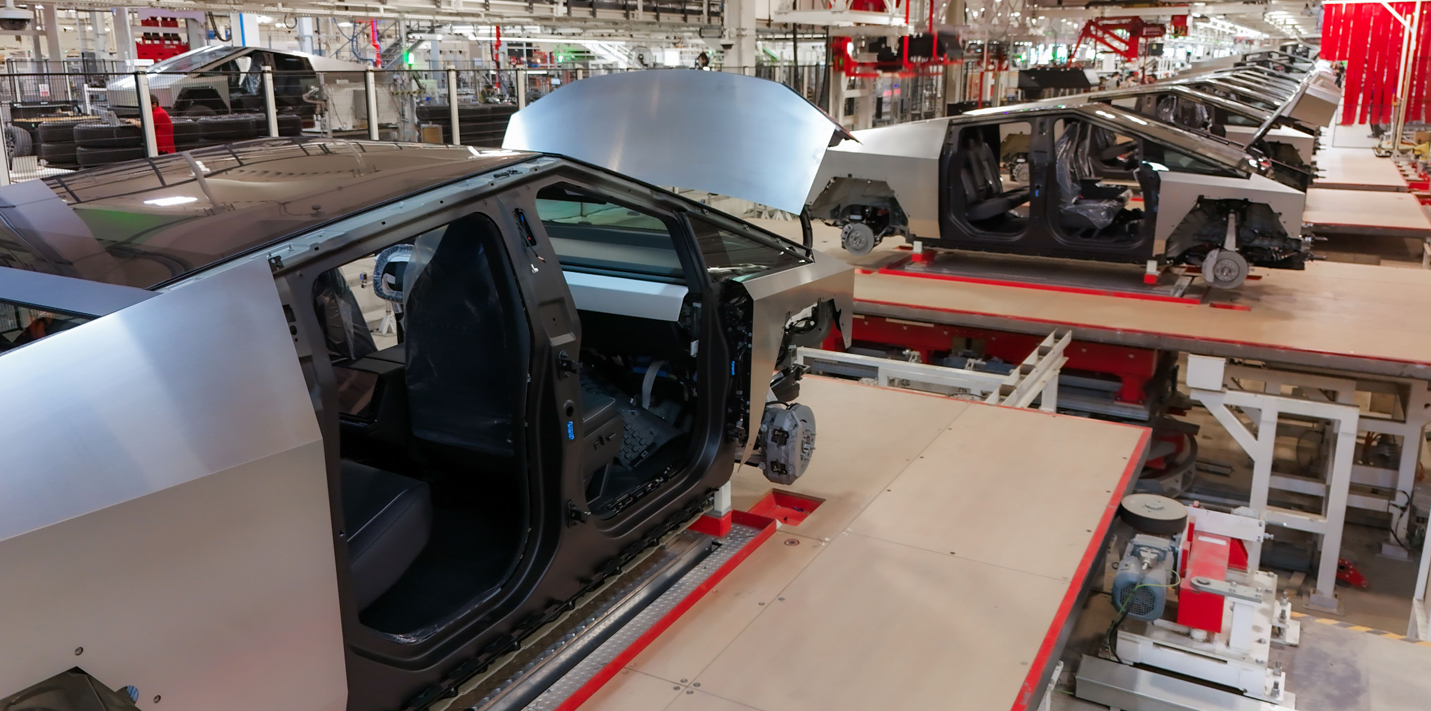Reduced Tesla Q1 Profits: A Look At The Underlying Causes

Table of Contents
Aggressive Price Cuts and Their Impact
Tesla's decision to implement aggressive price cuts across its vehicle lineup significantly impacted its Q1 profitability. This strategy, while aimed at boosting sales volume and market share, resulted in a considerable margin squeeze.
Margin Squeeze
- Reduced revenue per vehicle: Price cuts directly translate to lower revenue generated from each car sold. This significantly impacts the overall profitability, especially when considering the high production costs associated with EVs.
- Increased competition pressure: In the fiercely competitive EV market, price cuts are often a reactive measure to maintain competitiveness, particularly against established and emerging rivals. This reactive pricing can lead to a race to the bottom, impacting overall profitability across the industry.
- Necessity to maintain sales growth: Tesla's aggressive price strategy might be viewed as a necessary tactic to maintain sales momentum in a market increasingly saturated with competitive offerings. The prioritization of sales volume over immediate profit margin maximization is a key strategic consideration.
The strategic implications of these price cuts remain a subject of ongoing debate. While potentially sacrificing short-term profits, Tesla may be betting on a long-term strategy of capturing substantial market share to dominate the EV landscape and leverage economies of scale in the future. Data on specific price reductions and their correlation with sales volume would provide further insights into the effectiveness of this strategy. For example, a 10% price reduction leading to a 20% increase in sales would indicate a successful strategy, while the opposite would suggest otherwise.
Market Share Strategy
Tesla's price cuts can be viewed as a calculated move within a larger market share strategy. The company is operating in a rapidly expanding and increasingly crowded EV market.
- Competition from established and emerging EV manufacturers: Numerous established automakers and innovative startups are aggressively entering the EV market, offering a wider range of competitive models.
- Necessity to maintain a competitive edge: To remain competitive, Tesla needs to counter these new entrants, which often involves adjusting pricing strategies. This is particularly true in segments where competitors are offering similar features at lower prices.
- Impact on brand perception: While price cuts can boost sales, there's a potential risk to brand image. A perception of reduced quality or prestige might negatively impact long-term customer loyalty and brand value.
Competitors like BYD, Volkswagen, and Hyundai are actively expanding their EV lineups and making significant inroads in various market segments. Analyzing their pricing strategies in relation to Tesla's reveals a complex interplay of factors shaping the overall competitive dynamics of the EV market.
Rising Production Costs and Supply Chain Challenges
Significant headwinds in the form of rising production costs and persistent supply chain disruptions further contributed to Tesla's reduced Q1 profits.
Raw Material Inflation
The escalating costs of raw materials are a major factor impacting Tesla's production expenses.
- Increased input costs: Lithium, nickel, and cobalt, crucial components in EV batteries, have experienced substantial price increases in recent years due to high demand and supply chain bottlenecks.
- Challenges in securing stable supply chains: Securing a reliable and affordable supply of these critical raw materials is a persistent challenge for EV manufacturers globally.
- Impact on manufacturing costs: These elevated raw material costs directly translate into higher production expenses, squeezing profit margins.
Data on fluctuating raw material prices, particularly the price volatility of lithium carbonate and its impact on battery production costs, would highlight the severity of this challenge.
Supply Chain Disruptions
Global supply chain issues continue to plague industries worldwide, impacting Tesla's manufacturing efficiency and profitability.
- Shipping delays: Delays in shipping components from various suppliers across the globe have caused production slowdowns.
- Component shortages: Shortages of specific electronic components, semiconductors in particular, have hampered Tesla's ability to meet production targets.
- Factory production downtime: These disruptions have led to periods of reduced production capacity at Tesla's various manufacturing facilities.
Geographic analysis of the supply chain bottlenecks and their specific impact on Tesla's different factories reveals the complexity of these logistical challenges.
Increased Competition in the Electric Vehicle Market
The EV market is rapidly evolving, with increased competition and shifting consumer preferences further contributing to Tesla's reduced Q1 profits.
Growing Number of Competitors
The number of players in the EV market is increasing exponentially, leading to fiercer competition.
- Intensified competition: The market is no longer solely dominated by Tesla. Established automakers and numerous startups are actively vying for market share.
- Pressure on pricing: The increased competition is putting significant pressure on pricing, forcing companies to offer competitive pricing to attract customers.
- Innovation in EV technology: Rapid advancements in battery technology, charging infrastructure, and vehicle features are creating an intensely dynamic market.
Shifting Consumer Preferences
Consumer preferences and demand for various EV types are also influencing the market landscape.
- Consumer demand for different vehicle types (SUVs, pickup trucks): The market is diversifying beyond sedans, with increased demand for SUVs and pickup trucks.
- Growing competition in specific vehicle segments: Tesla faces intensifying competition in particular segments such as SUVs, where established automakers offer compelling alternatives.
Analyzing competitor successes in specific niches, such as the success of Rivian in the electric pickup truck segment, reveals how rapidly the market is shifting and impacting Tesla's overall market position.
Conclusion
The reduced Tesla Q1 profits are a result of a complex interplay of factors. Aggressive price cuts, while boosting sales, significantly impacted profit margins. Simultaneously, rising production costs due to raw material inflation and persistent supply chain disruptions further squeezed profitability. Finally, increased competition and shifting consumer preferences within the dynamic EV market added additional pressure. The interconnectedness of these challenges highlights the difficulty in maintaining profitability in this rapidly evolving industry.
The reduced Tesla Q1 profits highlight the challenges inherent in maintaining profitability within a rapidly evolving and competitive electric vehicle market. Staying informed on future Tesla financial reports and industry analysis is crucial to understand the long-term impact of these trends. Further research into the reduced Tesla Q1 profits and its impact on the future of the EV market is essential for investors and industry analysts alike.

Featured Posts
-
 Rocket Launch Abort Blue Origins Subsystem Problem Halts Mission
Apr 24, 2025
Rocket Launch Abort Blue Origins Subsystem Problem Halts Mission
Apr 24, 2025 -
 Ella Bleu Travolta Zapanjujuca Ljepota Kceri Johna Travolte
Apr 24, 2025
Ella Bleu Travolta Zapanjujuca Ljepota Kceri Johna Travolte
Apr 24, 2025 -
 Sale Of Chip Tester Utac Update On Chinese Buyout Firms Plans
Apr 24, 2025
Sale Of Chip Tester Utac Update On Chinese Buyout Firms Plans
Apr 24, 2025 -
 The Bold And The Beautiful Thursday April 3 2024 Liams Collapse And Hopes New Home
Apr 24, 2025
The Bold And The Beautiful Thursday April 3 2024 Liams Collapse And Hopes New Home
Apr 24, 2025 -
 Ohio Train Derailment Persistent Toxic Chemicals In Buildings Months After The Disaster
Apr 24, 2025
Ohio Train Derailment Persistent Toxic Chemicals In Buildings Months After The Disaster
Apr 24, 2025
